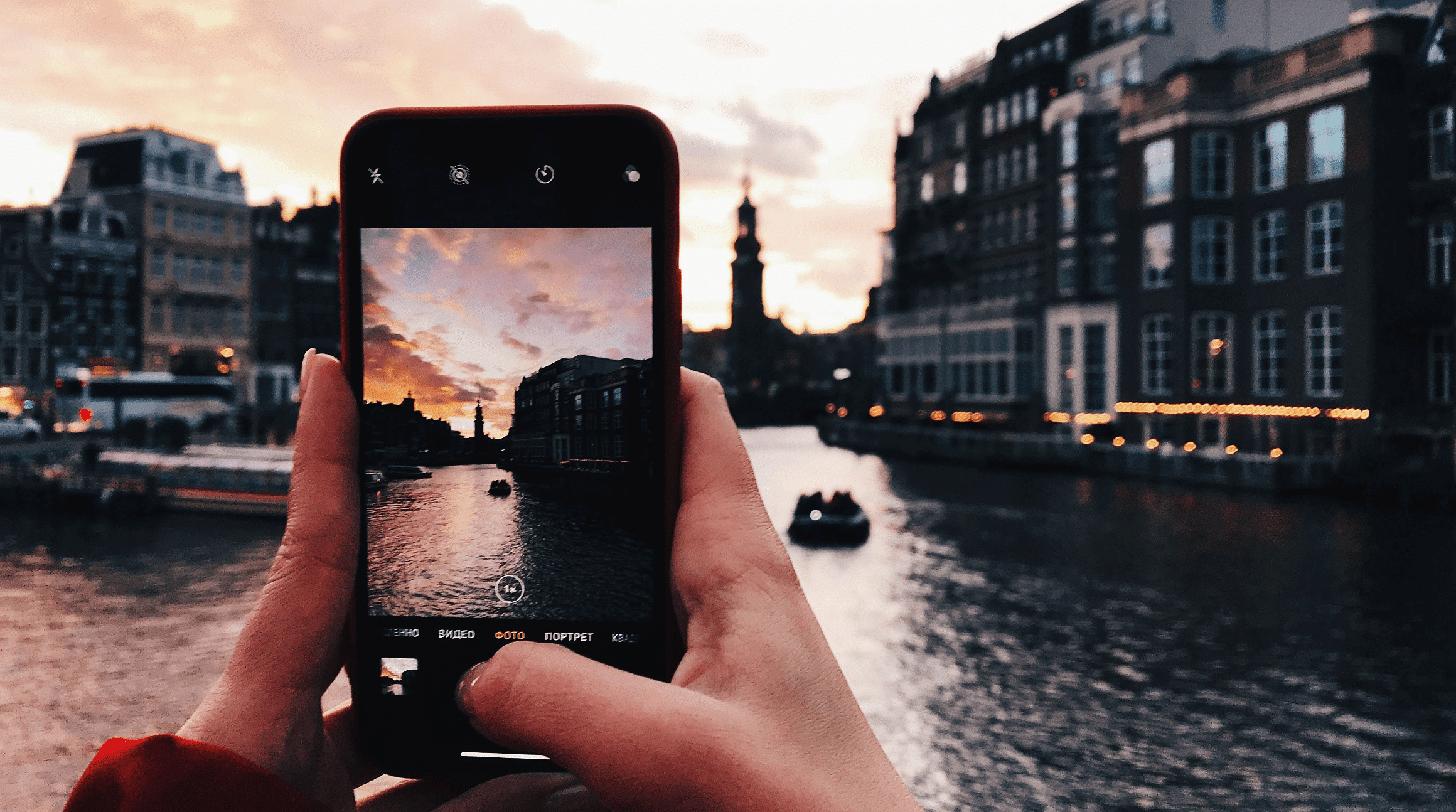No products in the cart.
Uncategorized
The Dos & Don’ts of Using Your Phone Overseas

Our smartphones make our everyday lives much easier, providing us with a constant stream of communication and knowledge at our fingertips. Overseas, your phone can be an equally powerful tool to maximize your travels and stay connected with loved ones back home.
There are a few best practices to keep in mind so you can stay safe and connected while you travel. Here are our top tips for using your phone overseas.
Do: Turn Off Data Roaming
Before you get on that plane (or train) to leave the country, turn off both data roaming and cellular data on your phone. This will prevent your device from connecting to towers or networks along your journey, leading to pricey roaming charges from your carrier.
At least…in theory. Some third-party apps, particularly those with automatic data syncing (like Google, iCloud, and Dropbox), can turn cellular data and data roaming on by themselves. Comb through your app list while you’re packing to make sure you’ve uninstalled or restricted data access for these types of apps.
While you’re at it, reset your data usage statistics before you leave and monitor the graph while you travel. If something is still using data even after you’ve turned everything off, it’ll show up right away.
Don’t: Rely on Airplane Mode.
Airplane mode doesn’t actually turn off data roaming and cellular data. One family learned that the hard way, returning home to a $13,470 bill thanks to “offline” apps quietly updating software and refreshing ads in the background (yikes!).
Airplane mode turns off all your phone’s radio connections (cellular, Bluetooth, and Wi-Fi), but apps that don’t require an internet connection will continue to use data. Your best bet to avoid expensive roaming charges is to turn off data roaming or — even better — use a prepaid data plan.

When you check your roaming bill…
Do: Get a Prepaid Data Plan
Avid travelers typically opt for local SIM cards or else just remove their SIM cards and rely on WiFi hotspots, but better options exist. If your phone has eSIM support, you can access cheap, convenient mobile data plans on demand from a marketplace like Airalo.
Depending on where you’re going, a mobile data plan can be a godsend. Whether you need maps or to connect with local resources, a functioning phone may mean the difference between a frustrating and blissful trip.
If your phone was manufactured after 2018 and it’s not a cheap burner phone, there’s a chance it has eSIM support. Here’s a list of devices that have it.
Don’t: Rely on Wi-Fi
Don’t hope that Wi-Fi is available everywhere you go. Relying on Wi-Fi for international travel is a common bit of advice for travelers on a budget, but only about 59% of the world has internet. While that number is substantially higher in the developed world and tourist hotspots, it says nothing about connection stability or speed.
A better option is to have data access at the ready. With a prepaid eSIM plan, you can connect to data no matter where you are in the world. It’s as simple as downloading and activating a data pack and topping it up as you go. That means no more spotty Wi-Fi and instant access to an internet connection.

Do: Refresh Your Phone’s Security
If there’s one thing you’re most likely to lose on your trip, it’s your phone. Research shows that smartphones are the most commonly misplaced and stolen devices during travel. Prepare for this by revisiting your phone’s security measures before you leave.
We recommend that you:
- Update multi-factor authentication steps so they’re accessible if you can’t receive calls or texts.
- Get a VPN for when you’re connected to public WiFi abroad.
- Use a password manager.
- Check for security patches or updates before leaving.
- Set up a phone tracker app in the event that your phone goes missing.
Don’t: Leave Your Phone Case Behind
Electronic data security matters, but so does physical security. Don’t leave home without a solid phone case and possibly a screen protector (if you’re the adventurous type, you’ll thank us!). It’s easy for your phone to slip out of your hand or pocket while you’re climbing the next peak or sprinting to catch the next train. Protecting your device on all fronts will save you the stress (and tears) of a cracked screen or dislodged component.

Do: Back Up Your Phone
Backing up your phone to the cloud keeps your data safe while you’re traveling. To maintain your privacy, you should strongly consider performing a factory reset as well to remove your personal information from the device
There are two main reasons for this. First, border agents and customs can search your phone – both at the US border and abroad. Some reports suggest that certain countries, like China, may install tracking software on your phone that downloads your data, texts, and even your social media activity.
Second, airport WiFi is of increasing interest to hackers, thanks to open (unsecured) WiFi and waiting crowds connecting to it. Even if you’re using a VPN, you have no idea who may be eavesdropping on your connection.
If you don’t want to perform a factory reset before you leave, then definitely perform one when you get back. You will likely encounter questionable WiFi connections while abroad, so assume your device has been compromised and take proactive steps to minimize that threat.
Don’t: Trust Open Wi-Fi Connections
Don’t leave automatic Wi-Fi connectivity on while you travel. It might seem obvious not to trust open connections in cafes or hotels, but you don’t even need to be knowingly connected to a network for your data to be stolen.
To turn off your automatic Wi-Fi connection on an iPhone:
- Go to “Settings”
- Tap “Wi-Fi”
- Choose “Ask to Join Networks”
- Switch it on
On an Android:
- Go to “Settings”
- Tap “Network & Internet”
- Tap “Wi-Fi”
- Tap “Wi-Fi Preferences”
- Switch off “Connect to Open Networks”
Using your phone abroad to stay connected and on track is entirely possible with a few preparations. From knowing your options regarding mobile data to securing your device from hardware to operating system, make sure you’re laying the groundwork for a fun, connected, stress-free vacation.
Need mobile data while you travel? You’ve got options. Check them out in the Airalo marketplace.
Frequently Asked Questions
What is data roaming?
Data roaming is a feature that allows you to connect to a mobile network outside of your carrier’s coverage area. Although data roaming allows you to continue to access mobile services, doing so is significantly more costly than using data within your home network.
Should data roaming be on or off abroad?
It’s best to turn data roaming off when you are abroad to avoid incurring roaming charges from your carrier. However, if you have an eSIM or data roaming plan, you may need to turn data roaming on to continue to access your mobile services abroad.
Can I use my phone overseas without roaming?
Yes, it is possible to use your phone overseas without roaming by taking advantage of eSIMs, local SIM cards, Wi-Fi, or international plans. For example, you can use an eSIM to add a local or international plan to your phone without physically changing your SIM card. This enables you to use mobile services abroad without worrying about unexpected roaming charges from your provider.
What is airplane mode?
Airplane mode is a feature available on many electronic devices, such as smartphones, tablets, and laptops, that allows you to quickly disable wireless communication functions. When airplane mode is activated, it turns off your device’s radio-frequency transmission capabilities, including cellular networks, Wi-Fi, and Bluetooth. The purpose of airplane mode is to ensure that the device does not transmit signals that could potentially interfere with the communication and navigation systems of an airplane during flight.
Does airplane mode use data?
No, airplane mode does not use data. When you activate airplane mode on your device, it disables all wireless communication functions, including cellular data, Wi-Fi, and Bluetooth. While you can manually enable Wi-Fi after turning on airplane mode, the device won’t use mobile data unless you disable airplane mode or turn on mobile data separately.
Does airplane mode prevent roaming charges?
Yes, activating airplane mode can help prevent roaming charges while you are abroad. When you turn on airplane mode, it disables all wireless communication functions on your device, including cellular networks. This means that your device won’t connect to any mobile network, and you won’t incur roaming charges for voice calls, text messages, or mobile data.
Can I use Wi-Fi on airplane mode internationally?
Yes, you can use Wi-Fi while in airplane mode internationally. When you activate airplane mode on your device, it turns off cellular networks, including voice, data, and text messaging; however, it does not disable Wi-Fi. You can manually enable Wi-Fi while in airplane mode, allowing you to connect to available Wi-Fi networks without incurring international roaming charges.

